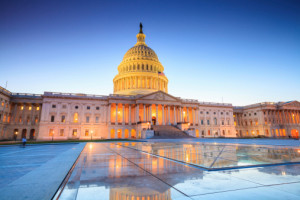
The Office of the Federal Register has missed an opportunity to ensure meaningful public access to over 9,000 government regulations.
Agencies have incorporated – but only by reference – over 9,000 privately drafted standards into binding law. These “incorporated by reference” (IIBR) standards, unlike the text of all other statutes and regulations, are not readily available either online or in libraries, but instead are strewn across numerous private websites, with prices for access ranging into the hundreds or even thousands of dollars per standard.
Physical inspection of a standard in a Washington, D.C., agency office is typically the only alternative. In a positive development, some private standards development organizations (SDOs) have begun to create online reading rooms in which some IBR rules can be freely viewed. But readers must waive rights or even agree to indemnification and forum selection clauses. Meanwhile, SDOs uniformly reserve the right to revoke access at will. This is not meaningful public access.
In its November, 2014, rule, the Office of the Federal Register (OFR) refused an opportunity to engage these public access issues. The OFR left the status quo intact, declining to offer any interpretation of the Freedom of Information Act’s requirement that IBR material be “reasonably available to the class of persons affected.” Instead, the OFR merely required the rulemaking agency to “summarize” the material in any proposed rule that would incorporate a private standard by reference, and then in the final rule to explain “the ways that the materials it proposes to incorporate by reference are reasonably available to interested parties.” This is cold comfort.
Although the OFR is the agency tasked with approving each incorporation by reference, it has not stated even whether it would independently evaluate the availability of materials, or whether it would simply rubber-stamp the agency’s statement.
Administrative Conference of the United States (ACUS) senior attorney Emily Bremer has argued in detail that public access to the law must be balanced against other values, such as reducing agency costs associated with regulation. In particular, she cites the example of PHMSA, the Pipeline and Hazardous Materials Safety Administration, which was compelled by statute to ensure that all its IBR standards were freely available online beginning in 2013, until Congress cut the requirement back several months later.
Bremer’s instructive analysis confirms that IBR standards are expensive. According to Bremer, “a complete set of PHMSA’s incorporated standards” cost nearly $10,000 as of last September. The average price for just one standard is $150.
Is $150 expensive? It depends who is buying. In Michigan, my home state, controversy is raging over a proposed expansion of oil shipments through a fifty-year old pipeline running under the iconic, ecologically sensitive Straits of Mackinac, where Lake Huron and Lake Superior meet, and then through the state. Consider ordinary individuals with homes near the pipeline, nearby small businesses, or individuals who might be considering moving nearby, or those who are generally concerned about environmental risk to the Great Lakes, and who want to know what rules constrain the pipeline operator, or to communicate with relevant governmental representatives about the underlying policy issues. A charge of $150 per rule is prohibitive for many, if not all. So too would be the option of inspecting PHMSA standards in Washington, DC.
Bremer’s findings confirm my own research that IBR standards are only erratically available through SDO online reading rooms. She found that roughly a third of PHMSA-incorporated standards to which SDOs promised free access were inexplicably absent. My experience unsuccessfully searching for free-access, consumer safety IBR standards is similar, including the CPSC’s recently incorporated-by-reference safety standard for infant sling carriers, which is available from the SDO at $ 51.60, but does not currently appear in its free reading room for incorporated standards.
Bremer’s most important point concerns PHMSA’s costs of implementing the public access requirements. PHMSA spent time and resources to negotiate access arrangements with SDOs, though perhaps such costs are inevitable with any transition. The agency was unable to reach agreement with one SDO, the American Society of Mechanical Engineers, over ASME’s Boiler and Pressure Vessel Code, a valuable, lengthy set of standards. PHMSA apparently had no ready substitute for the IBR standards drawn from ASME’s 2007 version of this code, which may have prompted Congress to retreat from its statutory requirement of free public access.
PHMSA, however, often did arrive at satisfactory arrangements with the other SDOs, ending up with free-access arrangements that covered 78% of IBR standards. This was apparently accomplished with no direct payment to the SDOs, even though agencies are permitted to contribute to SDO standards development. (Perhaps the prospect of some payment—which Congress would need to appropriate – would expand an SDO’s willingness to negotiate.)
What about ASME’s boiler code? ASME is a well-respected professional organization, and an inability to utilize these standards could well be problematic for federal regulation, though I cannot afford the $2,500 to see for myself the three boiler code sections PHMSA incorporated by reference. Nor, I suspect, would that be affordable for other interested individuals.
Bremer’s assessment of PHMSA’s predicament emphasizes that the agency lacked the technical expertise to replace or evaluate the details of this “technically sophisticated and highly complex” standard. This is deeply troubling for a different reason than the one Bremer suggests. In this sort of public-private partnership, we count on agencies to act on the public’s behalf. If an agency lacks the relevant expertise to assess a particular privately-drafted rule, including whether it meets the statutory standards Congress has asked the agency to implement, the need for public accountability – and, thus, meaningful public access to the law’s text – is even more compelling.
In an earlier The Regulatory Review essay, I wrote that not only do regulated entities need to know the law with which they must comply, but the public needs to know the law to make informed decisions about where to live, what medical treatments to choose, and whether to buy particular products. Perhaps most importantly, the public must also be able to hold government accountable for making regulatory decisions in a reasoned and democratically responsive manner. Requiring a significant payment or travel to read these standards stands in tension with constitutional values of fair notice and the public’s ability to debate government policy.
Requiring meaningful levels of public access will no doubt occasion some costs. But then, all procedural rules have costs, whether it is judicial review of agency action, a hearing on cessation of disability benefits, or a right to counsel in criminal trials. Public access to the law is too important for us to be giving it up so readily.
We have long committed as a nation to this value. That commitment began with Congress’s decision in 1795 to take on the distribution of the laws as a public function, rather than leaving it to newspaper publishers. Congress continued the commitment with the required availability of statutes and regulations in the depository library system created in 1859. Since 1993, that same commitment underlies the requirement for the online availability of statutes and regulations at minimal or zero cost.
For these same reasons, the Freedom of Information Act’s requirement that IBR material be “reasonably available to the class of persons affected” should be interpreted by the OFR – or clarified by Congress – to ensure meaningful levels of public access to these rules.
This essay is part of a three-part series, Incorporating Private Standards into Public Regulations.




